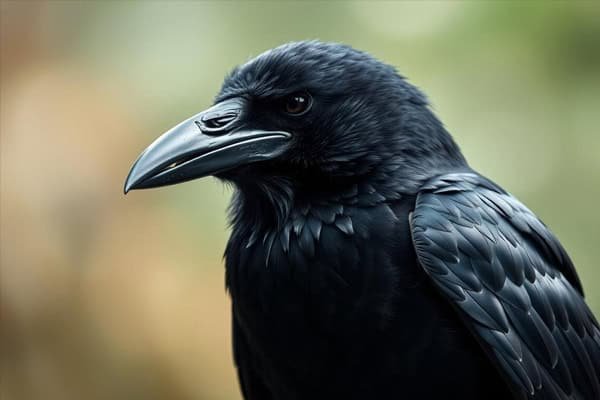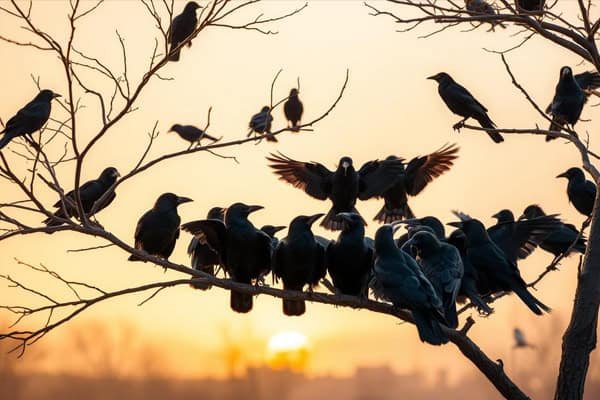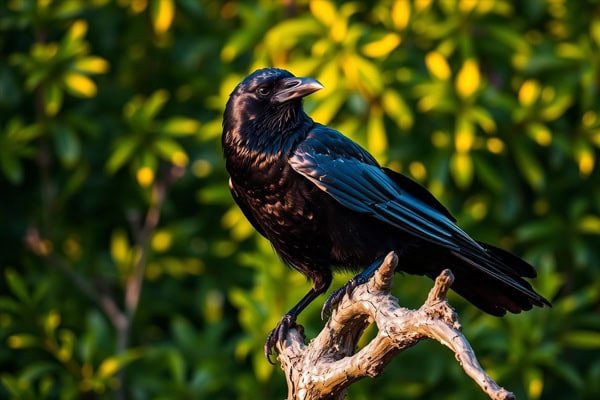Facts about crows always surprise me. Have you ever watched an American Crow solve a problem? They’re smart—really smart. Not just bird-smart, but tool-using, memory-holding smart. I’ve researched their behavior, and it’s fascinating. Crows have tight social groups. They even hold “funerals” for their dead. They mimic sounds and remember faces. They’re part of the corvid family, known for high intelligence. Let’s dive into 21 quick facts about these clever birds.
The Remarkable Intelligence of Crows
Crows are very smart birds—as smart as some primates and dolphins. They can solve problems and act in complex ways.
1. Crows Are Excellent Problem Solvers
Crows find creative ways to get food and solve problems. They drop nuts on the roads for cars to crack open, which shows that they use their environment to their advantage.
2. Crows Make and Use Tools
Crows are great at making and using tools. They use sticks to get food from hard places. They also use rocks to crack open shells. This shows their resourcefulness and cleverness.
3. Crows Can Read Traffic Lights
Crows can wait for traffic lights to change before getting food. This shows they understand and adapt to human systems. It highlights their smart thinking.
| Intelligence Trait | Description | Example of a common raven. |
| Problem Solving | Crows use innovative strategies to obtain food and solve complex problems. | Drop nuts on roads for cars to crack them open. |
| Tool Use | Crows create and utilize tools to achieve their goals. | Use sticks to retrieve food from hard-to-reach places. |
| Understanding Human Systems | Crows demonstrate an understanding of human-made systems, such as traffic lights. | Wait for the traffic lights to change before retrieving food. |
Physical Characteristics and Distribution
Crows have glossy black feathers and wedge-shaped tails. They are beautiful and adaptable, and their looks make them stand out.
4. Crows Have Glossy Black Feathers and Wedge-Shaped Tails
Crows have sleek, glossy black feathers. Their wedge-shaped tails make them easy to spot. These features help them live well in many places.
5. There Are Over 40 Different Species of Crows
The crow family has over 40 different species. This shows how well they can adapt and change. Each species is special but all share common traits.
| Species | Distribution | Distinctive Feature |
| American Crow | North America | Glossy black feathers |
| Eurasian Crow | Europe and Asia | Wedge-shaped tail |
| Australian Crow | Australia | Thick, black beak |
6. Crows Can Be Found on Every Continent Except Antarctica and South America
Crows can be found on every continent except Antarctica and South America. They live in forests, grasslands, and cities. This shows how well they can adapt and live with humans.
“Crows are found on every continent except Antarctica and South America, a distribution that highlights their adaptability and ecological flexibility.” – Ornithological Studies
In conclusion, crows are fascinating and resilient birds. They can live in many places. This is why they are so successful.
Surprising Facts About Crows’ Social Lives
Crows have complex social lives. They interact in fascinating and sophisticated ways, which shows how advanced their social behaviors are.
Crows Mate for Life
Crows are monogamous birds that mate for life. This is rare in the bird world. They form pairs during the breeding season and stay together for years, sometimes forever.
This shows how complex their social lives are.
Young Crows Help Raise Their Younger Siblings
Young crows stay with their parents for a long time. They help raise their younger siblings. This is called cooperative breeding.
It helps the parents and teaches the young crows important skills.
Crows Sleep in Communal Roosts
Crows sleep in communal roosts during winter, which can have thousands of crows. This keeps them warm and safe.
This shows their ability to form large groups.
Amazing Facts About Crows’ Communication
Crows have a complex way of talking to each other. They use many calls and even mimic sounds. This shows how smart and talkative these birds are.
Crows Have a Variety of Calls to Communicate
Crows make different sounds for different things. They might call out when they see danger or find food. This shows they can share important info with each other.
Crows Can Mimic the Sounds of Other Animals
Crows are amazing at copying sounds they hear. They can even imitate other animals. This shows their cleverness and wide range of sounds they can make.
Crows Have Regional Dialects
Crows talk differently in different places. Just like people do, this shows how they have their own social groups and adapt to their surroundings.
Fascinating Facts About Crows and Their Relationship with Humans
When you watch crows, you see they have a special bond with humans. They show us their smartness and how they can change to fit in.
Crows Can Recognize Individual Human Faces
Crows can tell each human face apart, a skill few animals have. This skill helps them know who to trust and who to avoid. Also, crows remember faces for years, showing they have great memories.
Crows Can Hold a Grudge
Crows don’t just remember faces; they also remember bad experiences. If a crow sees a human it doesn’t like, it will warn others. This shows how crows work together and share information.
Crows Have Been Associated with Death in Many Cultures
In many cultures, crows are seen as signs of death or the unknown. This might be because of their black feathers and where they are often found. But, crows are important in nature, helping clean up dead animals.
- Crows are known to form long-lasting memories of human faces.
- Their ability to hold grudges is a testament to their complex social behavior.
- Cultural associations with crows vary, but often relate to death or the supernatural.
If you’re curious to learn about spirituality articles, visit our site, spiritualpoint.org. To read more about crows, visit our complete guide on the spiritual meaning of crows.
Intriguing Facts About Crows’ Behavior
Crows show many interesting behaviors. They solve problems and interact with each other. These actions are not only cool but also show how smart and complex they are.
Crows Hold Funerals for Their Dead
Crows gather around dead friends, like a funeral. This shows they have deep feelings and think deeply. They can even tell when someone is dead and act on it.
Crows Drop Nuts on Roads for Cars to Crack Them Open
The Crows drop nuts on roads for cars to crack, showing that they can use their surroundings to get what they need.
Crows Congregate in Large Flocks Called “Murders”
Crows often meet in big groups, called “murders.” These meetings show their social side and the complex life of crows.
The Oldest Wild Crow Lived to Be 16-19 Years Old
The longest-lived wild crow was 16 to 19 years old. This shows how long crows can live in the wild.
Crows Are Omnivores That Eat Both Meat and Plants
Crows eat many things, like meat and plants. They can eat carrion, insects, seeds, and fruits. This makes them very good at living in different places.
Crows Have an Impressive Brain-to-Body Size Ratio
Crows have big brains for their size. This makes them very smart. They can do complex things and solve problems.
Final Word
The fascinating facts about crows show their great intelligence and complex social lives. They are very adaptable, making them stand out as clever birds. Their problem-solving skills, unique foraging ways, and complex communication are key reasons why.
Crows are not just smart; they also have complex social lives. They can recognize human faces, hold grudges, and even have “funerals” for their dead. These traits show their deep emotional and social intelligence.
Learning about crows’ intelligence and behaviors can change how you see them. Watching crows in nature can make you appreciate their cleverness and adaptability. It deepens your connection with these amazing birds.



